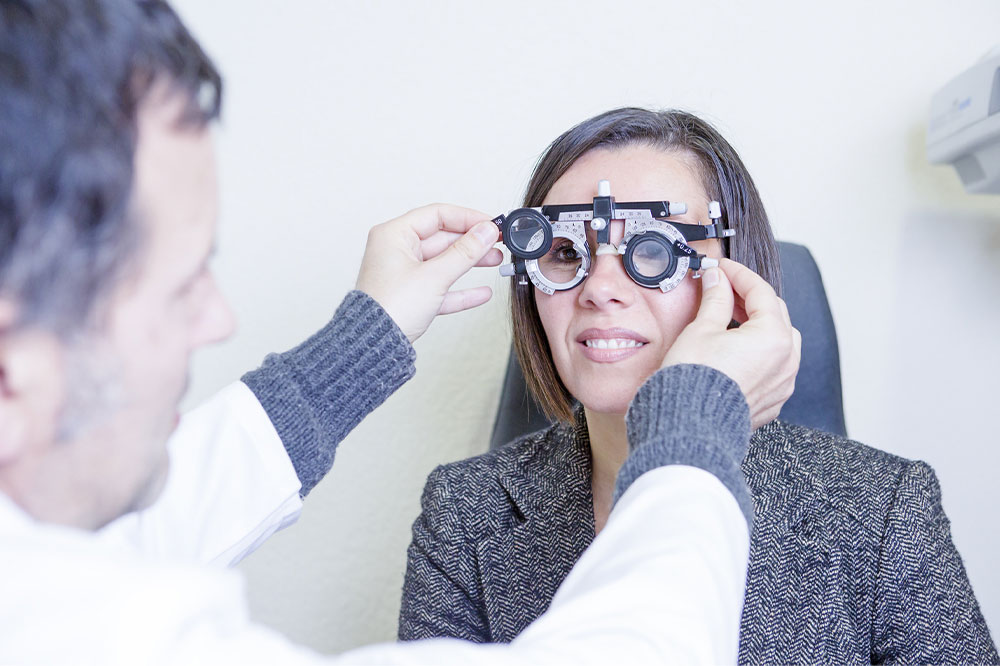
Symptoms, causes, diagnosis, and management of sudden double vision
Sudden double vision occurs when a person sees two images of a single object. In medical terms, this condition is known as diplopia. Be it children or adults, diplopia can affect anyone. The condition can impact a person’s quality of life including movement and reading ability. It is best to consult an eye-care professional when one experiences any symptoms. Read on to know the symptoms, types, causes, diagnosis, and treatments for double vision.
Signs and symptoms
Some of the common signs and symptoms of diplopia include:
- Headache – Sudden double vision may cause headaches.
- Nausea – In some cases, the condition may be accompanied by nausea.
- Pain – Experiencing pain when moving the eyes or pain around the eyes is a common symptom of double vision.
- Squinting or narrowing of eyes – Another noticeable symptom of sudden double vision is squinting or narrowing of eyes.
Types of double vision
Monocular double vision
When double vision occurs in only one eye, it is called monocular double vision. This means that a person sees a double image even when the other eye is closed.
Binocular double vision
When double vision affects both eyes, it is called binocular double vision. The person sees double images only when both eyes are open.
Causes of monocular double vision
- Cataracts
One of the common causes of monocular double vision is cataracts, which is a cloudy lens.
- Dry eye syndrome
In this eye condition, the eye does not produce enough tears or tears evaporate too quickly.
- Astigmatism
Problems in the cornea can lead to double vision. Astigmatism means that one of the eyes has a cornea of an irregular shape.
Causes of binocular double vision
- Brain aneurysm
A brain aneurysm is a bulge in the blood vessel in or around the brain. This bulge may press the eye nerves causing double vision.
- Stroke
A stroke obstructs the blood flow to the part of the brain that controls the eye muscle, resulting in double vision.
- Diabetes
Uncontrolled diabetes may cause nerve damage that may lead to sudden double vision.
- Cranial nerve palsy
Cranial nerves are nerves in the back of the brain. If a condition or injury affects these nerves, one may have problems with vision.
- Strabismus
Strabismus or crossed eyes is a common cause of double vision, especially in children. In this condition, both eyes do not line up in the same direction, resulting in diplopia.
Diagnosis
The diagnosis of sudden double vision can be done by an eye-care professional. Correct detection is essential for creating an appropriate treatment plan. Diagnosis of sudden double vision may involve:
- Detailed medical history
The eye-care professional will begin the diagnosis by understanding one’s symptoms and a complete history of past and current medical conditions. - Physical examination
This will help determine whether the type of double vision is monocular or binocular. - Diagnostic tests
If a neurological issue is suspected, specialized imaging tests will be recommended like Magnetic Resonance Imaging (MRI) and computed tomography (CT) scan. These are mostly required for diagnosing binocular diplopia.
Treatment
The treatment usually depends on the type of double vision, cause, and signs and symptoms. Some treatment options for sudden double vision include:
- Glasses or contact lenses
Sudden vision loss due to refractive errors can be corrected through the use of glasses or contact lenses. In certain cases, lenses with prisms may be used.
- Surgery
Sudden vision loss caused by cataracts can be corrected with surgery. It is often done for those with persistent eye muscle imbalances.
- Vision therapy
This is a kind of physical therapy that can help regain eye muscle strength and improve vision-related issues.
It is challenging to prevent sudden double vision and most people often make a full recovery with the recommended treatment option.




